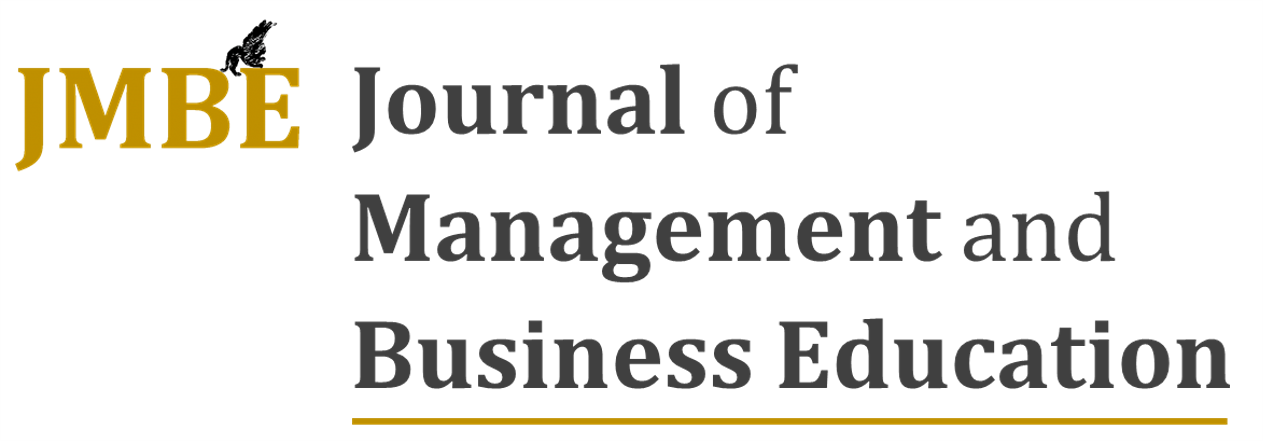Are female secondary school teachers in Bangladesh becoming digitally empowered or disempowered? An exploratory analysis of the impact of digital empowerment on professional development
DOI:
https://doi.org/10.35564/jmbe.2023.0020Keywords:
ICT, gender digital divide, digital empowerment, awareness, motivation, technical access, competence, ICT ambassadorAbstract
Differences in access, skills, and usage of digital technology between men and women have resulted in an unequal experience in using digital technology in changing work environments, especially in education, which is expressed as the gender digital divide. This divide serves as a barrier to digital empowerment and tends to be wider in developing countries. However, there is a scarcity of literature on digital empowerment among female teachers at the secondary school level. Therefore, based on Makinen’s (2006) perspective, this study investigated digital empowerment among Bangladeshi teachers with respect to gender-based differences. Data on the four components of digital empowerment mentioned by Makinen were collected using a semi-structured questionnaire from a random sample of 326 respondents, along with the qualitative method of an in-depth interview and focused group discussion from three city corporations: Dhaka, Khulna,and Rajshahi, according to their digital divide rates. The findings reveal that both overall awareness and technical access status are satisfactory. Yet, female teachers lacked significant intrinsic motivation and computer abilities to perform specific tasks. Findings also revealed that empowered women had better levels of professional capabilities, self-confidence, and more Information and Communication Technology (ICT)-based pedagogy. Female teachers should be recognized and encouraged in institutional programs to promote digital empowerment and reduce the digital divide between genders.
Downloads
References
Acılar, A. (2011). Exploring the aspects of digital divide in a developing country. Issues in Informing Science and Information Technology, 8, 231-244. DOI:10.28945/1415 DOI: https://doi.org/10.28945/1415
Alazzam, A. O., Bakar, A. R., Hamzah, R., & Asimiran, S. (2012). Effects of Demographic Characteristics, Educational Background, and Supporting Factors on ICT Readiness of Technical and Vocational Teachers in Malaysia. International Education Studies, 5(6), 229-243. http://dx.doi.org/10.5539/ies.v5n6p229 DOI: https://doi.org/10.5539/ies.v5n6p229
Antonio, A., & Tuffley, D. (2014). The gender digital divide in developing countries. Future Internet, 6(4), 673-687. https://doi.org/10.3390/fi6040673 DOI: https://doi.org/10.3390/fi6040673
Avidov-Ungar, O. (2018). Empowerment among teachers in leadership positions involving ICT implementation in schools. Leadership and Policy in Schools, 17(1), 138-163. https://doi.org/10.1080/15700763.2016.1270331 DOI: https://doi.org/10.1080/15700763.2016.1270331
Awodiji, O. A., Oyedoyin, M. M., & Jantuah, S. K. (2022). Analysis Of Nigerian Lecturers’professional Development Programme Participation. Journal of Management and Business Education, 5(3), 213-230. DOI: https://doi.org/10.35564/jmbe.2022.0013
Baden, S., & Oxaal, Z. (1997). Gender and empowerment: Definitions, approaches and implications for policy. BRIDGE Institute of development studies, Brighton, England, (40).
BANBEIS, (2017). Bangladesh Education Statistics Report.
Beena, M., & Mathur, M. (2012). Role of ICT education for women empowerment. International Journal of Economics and Research, 3(3), 164-172.
Blanco-González, A., Díez-Martín, F., & Miotto, G. (2023). Achieving Legitimacy Through Gender Equality Policies. SAGE Open, 13(2). https://doi.org/10.1177/21582440231172953 DOI: https://doi.org/10.1177/21582440231172953
Cochran, W. G. (1977). Sampling Techniques: 3d Ed. Wiley.
Cox, M.J., Preston, C., & Cox, K.(1999). What factors support or prevent teachers from using ICT in their classroom? Paper presented at the British Education Research Association Annual Conference, University of Sussex, Brighton,
Díez-Martín, F., Miotto, G. & Del-Castillo-Feito, C. The intellectual structure of gender equality research in the business economics literature. Rev Manag Sci (2023). https://doi.org/10.1007/s11846-023-00671-8 DOI: https://doi.org/10.1007/s11846-023-00671-8
Eva, R. (2022). “A Study on the Factors Motivating Teachers in Using ICT in their Instruction at a Government College in Bangladesh.” Journal of Research & Method in Education, 12, Issue 4 Ser. I 01-08. https://www.iosrjournals.org/iosr-jrme/papers/Vol-12%20Issue-4/Ser-1/A1204010108.pdf
Ellison, N. B., Steinfield, C., & Lampe, C. (2011). Connection strategies: Social capital implications of Facebook-enabled communication practices. New Media & Society, 13(6), 873–892. https://doi.org/10.1177/1461444810385389 DOI: https://doi.org/10.1177/1461444810385389
Gebhardt, E., Thomson, S., Ainley, J., & Hillman, K. (2019). Teacher gender and ICT. In Gender differences in computer and information literacy (pp. 53-68). Springer, Cham. DOI:10.1007/978-3-030-26203-7_5 DOI: https://doi.org/10.1007/978-3-030-26203-7_5
Habibu, T. (2012). A Study of Difficulties Faced by Teachers in Using ICT in Classroom Teaching-Learning in Technical and Higher Educational Institutions in Uganda (Doctoral dissertation, Department of Technical and Vocational Education (TVE), Islamic University of Technology (IUT).
Hargittai, E., & Shafer, S. (2006). Differences in actual and perceived online skills: The role of gender. Social science quarterly, 87(2), 432-448. https://doi.org/10.1111/j.1540-6237.2006.00389.x DOI: https://doi.org/10.1111/j.1540-6237.2006.00389.x
Hafkin, N., & Taggart, N. (2001). Gender, information technology and developing countries. Washington, DC Academy for Educational Development. http://usaid. gov/wid/pubs/it01/htm.
Hasan, M. S. H. K. M., & Khan, M. S. H. (2013). Introducing ICT into teacher-training programs: Problems in Bangladesh. Journal of Education and Practice, 4(14), 79-85. https://www.researchgate.net/publication/274641690_Introducing_ICT_into_Teacher-Training_Programs_Problems_in_Bangladesh
Ineke Buskens, “An Approach to Women Empowerment and ICT Projects reflection about Self and Social Change,” accessed October 18, 2018, https://files.ifi.uzh.ch/hilty/t/Literature_by_RQs/RQ%20302/2016_Buskens_Approach_to_women_empowerm.
Islahi, F. (2019). Exploring teacher attitude towards information technology with a gender perspective. Contemporary educational technology, 10(1), 37-54. https://doi.org/10.30935/cet.512527 DOI: https://doi.org/10.30935/cet.512527
ITU (International Telecommunication Union) (2020). Measuring Digital development, Facts and Figures: 2020. https://www.itu.int/en/ITU-D/Statistics/Documents/facts/FactsFigures2020.pdf.
Jackson, L. A., Ervin, K. S., Gardner, P. D., & Schmitt, N. (2001). Gender and the Internet: Women communicating and men searching. Sex roles, 44, 363-379. https://doi.org/10.1023/A:1010937901821 DOI: https://doi.org/10.1023/A:1010937901821
Kennedy, T., Wellman, B., & Klement, K. (2003). Gendering the digital divide. IT & Society, 1(5), 72–96. http://homes.chass.utoronto.ca/~tkennedy/Courses/2P26/Kennedy%202003.pdf
Kler, S. (2014). ICT integration in teaching and learning: Empowerment of education with technology. Issues and Ideas in Education, 2(2), 255-271. DOI:10.15415/iie.2014.22019 DOI: https://doi.org/10.15415/iie.2014.22019
Laudari, S., & Maher, D. (2019). Barriers to ICT use in EFL teacher education courses in Nepal: An activity theory perspective. Journal of NELTA, 24(1-2), 77-94. https://doi.org/10.3126/nelta.v24i1-2.27681 DOI: https://doi.org/10.3126/nelta.v24i1-2.27681
Li, N., & Kirkup, G. (2007). Gender and cultural differences in Internet use: A study of
China and the UK. Computers & Education, 48(2), 301-317. https://doi.org/10.1016/j.compedu.2005.01.007 DOI: https://doi.org/10.1016/j.compedu.2005.01.007
Mäkinen, M. (2006). Digital empowerment as a process for enhancing citizens' participation. E-learning and Digital Media, 3(3), 381-395. https://doi.org/10.2304/elea.2006.3.3.38 DOI: https://doi.org/10.2304/elea.2006.3.3.381
Martinez and Reilly, (2003). “Empowering Women for Public Policy Advocacy: Looking behind the Internet to Enable Citizen Information System.” https://trainingcentre.unwomen.org/instraw-library/2003-R-TEC-GLO.pdf
Moser, C. (2012). Gender planning and development: Theory, practice and training. Routledge. DOI: https://doi.org/10.4324/9780203411940
Mou, S. (2016). Possibilities and challenges of ICT integration in the Bangladesh education system. Educational Technology, 50-53. https://www.jstor.org/stable/44430461
Mumporeze, N.,& Prieler, M. (2017). Gender digital divide in Rwanda: A qualitative analysis of socioeconomic factors. Telematics and Informatics, 34(7),1285-1293. DOI: https://doi.org/10.1016/j.tele.2017.05.014
Muhwezi, I. (2023). Teachers' challenges affecting the implementation of the new business subjects’ curriculum in selected secondary schools in Uganda. Journal of Management and Business Education, 6(2), 222-239. https://doi.org/10.35564/jmbe.2023.0011 DOI: https://doi.org/10.35564/jmbe.2023.0011
Organisation for Economic Co-operation and Development (OECD). (2018). Bridging the digital gender divide: Include, upskill, innovate.
Passey, D., Shonfeld, M., Appleby,L., Judge, M., Saito, T.,& Smits, A. (2018). Digital agency: Empowering equity in and through education. Technology, Knowledge and Learning, 23, 425-439. https://doi.org/10.1007/s10758-018-9384-x DOI: https://doi.org/10.1007/s10758-018-9384-x
Philomina, M. J., & Amutha, S. (2016). Information and communication technology awareness among teacher educators. International Journal of Information and Education Technology, 6(8), 603. DOI:10.7763/IJIET.2016.V6.759 DOI: https://doi.org/10.7763/IJIET.2016.V6.759
Podorova, A., Irvine, S., Kilmister, M., Hewison, R., Janssen, A., Speziali, A., ... & McAlinden, M. (2019). An important, but neglected aspect of learning assistance in higher education: Exploring the digital learning capacity of academic language and learning practitioners. Journal of University Teaching & Learning Practice, 16(4), 3. . https://doi.org/10.53761/1.16.4.3 DOI: https://doi.org/10.53761/1.16.4.3
Prihatin, P. N. English teacher participants’engagement in online learning session of teaching profession certification program.
Purushothaman, A. (2013). Empowering women through learning to use the internet-An ethnographic action research project to address the second order digital divide.
Rio, H., & Newman, W. (2022). The Significance of Models of Continuous Professional Development Programmes in Promoting Quality Teaching and Learning in Schools. African Perspectives of Research in Teaching & Learning (APORTAL), 6(1).
Saha, S. R., & Zaman, M. O. (2017). Gender digital divide in higher education: a study on University of Barisal, Bangladesh. Journal of Humanities and Social Science, 22(01), 11-17. DOI:10.9790/0837-2201041117 DOI: https://doi.org/10.9790/0837-2201041117
Schradie, J. (2015). The gendered digital production gap: Inequalities of affluence. In L. Robinson, S. R. Cotten, & J. Schulz (Eds.), Communication and Information Technologies Annual, Studies in Media and Communications, Volume 9 (pp. 185-213). Emerald Group Publishing Limited. DOI: https://doi.org/10.1108/S2050-206020150000009008
Schulz, R., Isabwe, G. M., & Reichert, F. (2015, September). Investigating teachers’ motivation to use ICT tools in higher education. Internet Technologies and Applications (ITA) (pp. 62-67). IEEE. DOI:10.1109/ITechA.2015.7317371 DOI: https://doi.org/10.1109/ITechA.2015.7317371
Soomro, K. A., Kale, U., Curtis, R., Akcaoglu, M., & Bernstein, M. (2020). Digital divide among higher education faculty. International Journal of Educational Technology in Higher Education, 17(1), 1-16. DOI:10.1186/s41239-020-00191-5 DOI: https://doi.org/10.1186/s41239-020-00191-5
Soltan, L. (2016). Digital divide: The technology gap between the rich and poor. Retrieved February, 26, 2016.
Shrestha, S. A. G. U. N. (2018). ICT in education. The Kathmandu post, Retrieved from https://kathmandupost. com/opinion/2018/11/07/ict-in-education, Accessed: May, 20, 2020.
Taddese, E. T., & Rao, C. (2021). School-based continuous professional development of teachers: a case study of primary school teachers in Ethiopia. Education 3-13, 0(0), 1–13. https://doi.org/10.1080/03004279.2021.1929382 DOI: https://doi.org/10.1080/03004279.2021.1929382
Terry, A., & Gomez, R. (2010). Gender and public access computing: An international perspective. The Electronic Journal of Information Systems in Developing Countries, 43(1), 1-17. DOI:10.1109/HICSS.2011.211 DOI: https://doi.org/10.1002/j.1681-4835.2010.tb00309.x
Tyers, A. (2012). A Gender Digital Divide? Women Learning English through ICTs in Bangladesh. In mLearn (pp. 94-100). https://ceur-ws.org/Vol-955/papers/paper_16.pdf
Van Dijk, J. A. (2012). The evolution of the digital divide-the digital divide turns to inequality of skills and usage. Digital enlightenment yearbook 2012 (pp. 57-75). IOS Press. DOI: https://doi.org/10.4324/9780203069769-12
Van Dijk, J. A. G. M. (2002). A framework for digital divide research. Electronic Journal of Communication, 12(1),2. http://www.cios.org/EJCPUBLIC/012/1/01211.html
World Economic Forum, (2022). How to unlock women’s potential in the digital economy. https://www.weforum.org/agenda/2023/04/why-global-leaders-must-make-green-investments-make-business-sense-at-the-world-bank-spring-meetings/
Webb, D. A., & Buskens, D. I. (Eds.). (2014). Women and ICT in Africa and the Middle East: Changing selves, changing societies. Bloomsbury Publishing. DOI: https://doi.org/10.5040/9781350224025
Zaman, H., & Uzzaman, R. (2015). Achieving digital Bangladesh by 2021 and beyond. Background paper for the 7th Five Year Plan (7FYP). http://www.plancomm.gov.bd/wp-content/uploads/2015/02/18_Achieving-Digital-Bangladesh-by-2021-and-Beyond.pdf.
ZebunnesaLaizu, Jocelyn Armarego, and Fay Sudweeks, “The Role of ICT in Women’s Empowerment in Rural Bangladesh” Proceeding Cultural Attitudes Towards Communication and Technology( 16 January 2015):228, accessed on Octobor 2, 2018, http://www. Researchget.net/ publications/268259843.
Downloads
Published
How to Cite
Issue
Section
License
Copyright (c) 2023 Journal of Management and Business Education

This work is licensed under a Creative Commons Attribution-NonCommercial-ShareAlike 4.0 International License.
License terms at: https://creativecommons.org/licenses/by-nc/4.0/legalcode




